We explore the North Pole, and describe its climate, flora and fauna. In addition, we discuss what an aurora borealis is, and more.
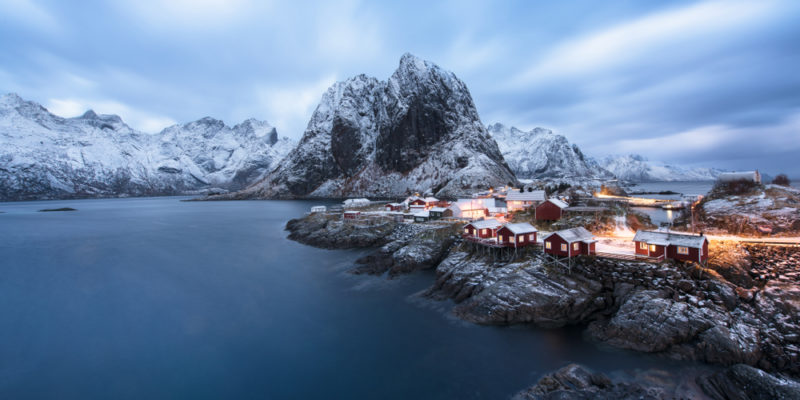
What is the North Pole?
The North Pole is the northernmost geographical point on Earth, that is, the northernmost place on the planet. In the North Pole, all meridians converge, and all directions point south. It is located on the Arctic Ocean, at 90° north latitude.
Unlike the South Pole, situated on the continent of Antarctica, the North Pole does not lie on continental surface but rather consists of huge ice blocks floating on the waters of the Arctic Ocean. An imaginary line can be drawn between the two poles, which is the planet's rotational axis.
The region surrounding the North Pole is characterized by an ice cap climate with temperatures below freezing every month of the year and extremely low precipitation, generally not exceeding 8 inches (200 mm) annually.
The first people to reach the North Pole were Italian engineer Umberto Nobile, Norwegian explorer Roald Amundsen, and American explorer Lincoln Ellsworth. Along with thirteen other people, they set off from Rome aboard an airship, managing to fly over the North Pole several days after, on May 12, 1926.
The word “Arctic” derives from the Greek term arktos, meaning "bear". This name makes reference to the Ursa Major and Ursa Minor constellations, which lie in the northern sky above the North Pole and the Arctic region.
- See also: South Pole
Characteristics of the North Pole
Among the main features of the North Pole, the following stand out:
- It is composed of huge sea ice cover over the Arctic Ocean, meaning it has no continental landmass.
- It is an area bordering Russia, Norway, Denmark, Canada, and the state of Alaska in the United States.
- It has an ice cap climate, with extremely low temperatures throughout the year.
- It has very little flora and fauna, with both animals and plants having to evolve adaptations to survive in this environment.
- It is a region where aurora borealis (northern lights) can be observed.
- The region experiences polar nights (a period when the sun does not rise at any time of the day) and polar days (a period when sunlight is present at all times).
- Among the peoples living in nearby continental areas are the Inuits, the Sami, the Chukchi, the Nenets, and the Aleuts.
Geographic North Pole and Magnetic North Pole
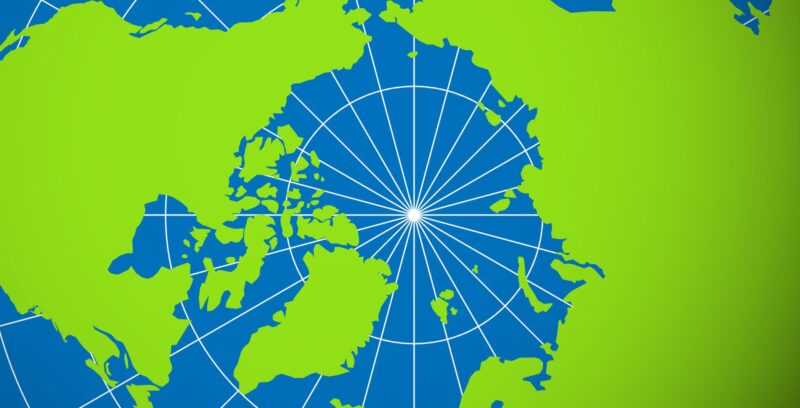
The North Pole may refer to two distinct concepts:
- Geographic North Pole. It is the geographical point on Earth's surface that coincides with the northern vertex of Earth’s imaginary axis of rotation. At the opposite extreme point is the South Pole.
- Magnetic North Pole. It is the northward location indicated by a compass, which shifts approximately 25 to 30 miles (40 to 50 km) annually. This shift results from the fact that part of the Earth's core is not solid, which influences the magnetic field it generates.
Climate of the North Pole
The North Pole has an ice cap climate. Winter temperatures in this region range between -50.8 °F and -14.8 °F (-46 °C and -26 °C), while in summer they reach 32 °F (0 ºC), but rarely exceed it.
Precipitation is very low, rarely exceeding 8 inches (200 mm) annually, and always occurs in the form of snow. Another characteristic of the ice cap climate is its intense winds, which significantly reduce windchill factor.
Polar day is the name given to a phenomenon characterized by the presence of sunlight 24 hours a day. This happens because, being at the planet's end, the North Pole always faces the sun during the summer despite Earth's rotation. During the same period, the polar night occurs at the South Pole, when sunlight is absent throughout the day. This phenomenon reverses at both poles with the change of seasons.
Population of the North Pole
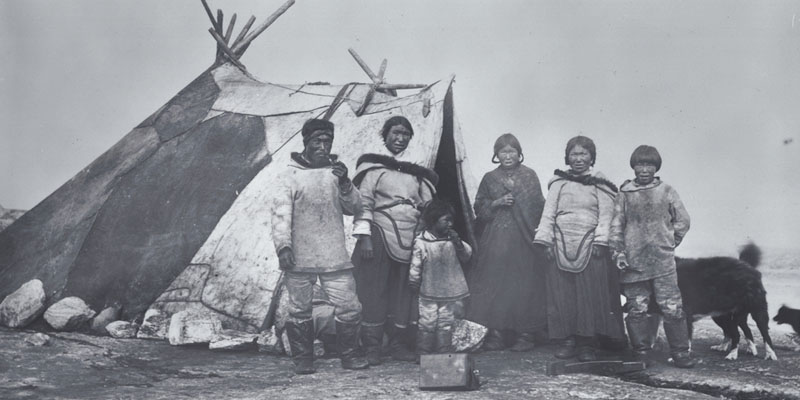
Not lying on a continental landmass, the North Pole is uninhabited. However, in the nearby continental areas, small indigenous communities have settled, among which the following stand out:
- Inuit. The Inuit are a group of indigenous peoples mainly inhabiting Canada, Greenland, Alaska (United States), and parts of Siberia (Russia). They are known for their ability to adapt to the harsh Arctic conditions, and have developed a culture based on hunting, fishing, and gathering. Traditionally, they live in houses made of ice blocks and snow called igloos. Their population is estimated at about 170,000 people.
- Sami. The Sami are an indigenous people occupying parts of northern Norway, Sweden, Finland, and the Kola Peninsula (Russia). They are known for their traditional way of life, based on reindeer herding, fishing, and hunting. They number an estimated 82,000 people.
- Chukchi. The Chukchi are an ethnic group occupying the Chukotka region, in the northeasternmost part of Siberia (Russia). They have inhabited these lands for thousands of years and have traditionally been engaged in hunting, fishing, and reindeer herding. They are estimated to number about 10,000 people.
- Nenets. The Nenets are a group of reindeer herders inhabiting the Yamal Peninsula in northwestern Siberia (Russia). Their way of life revolves around reindeer herding, which provides them with food, clothing, and shelter. Their culture is characterized by their close relationship with nature and their ability to forage through vast expanses of tundra. Their population is estimated at about 40,000 people.
- Aleuts. The Aleuts are an indigenous group that has historically lived in the Aleutian and Pribilof Islands, which extend from southwestern Alaska to the eastern Bering Sea. The Aleuts were typically engaged in hunting marine mammals and fishing, with their culture being closely related to the marine environment. It is estimated that this group comprises about 18,000 people.
The Arctic Council is a intergovernmental cooperation forum that brings together States and indigenous peoples of the Arctic region. It aims to implement policies for the conservation and preservation of the environment, and the protection of ecosystems. The participating states are the United States, Canada, Iceland, Denmark, Finland, Norway, Sweden, and Russia.
Flora of the North Pole
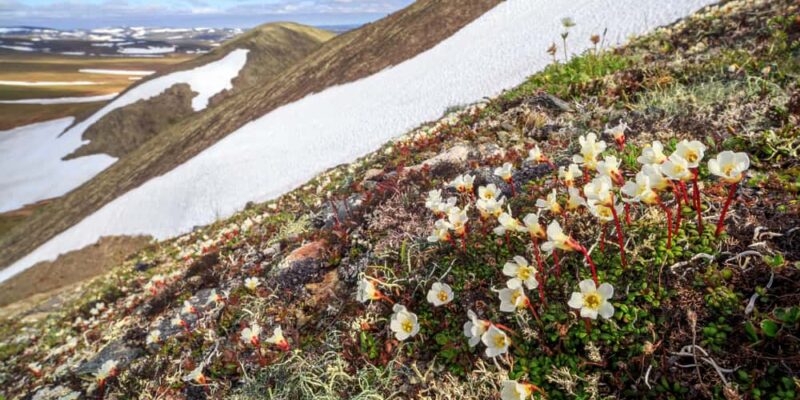
The flora of the Arctic polar region is limited, extending along coastal areas of the continental landmasses surrounding ice blocks. The plants in these regions are adapted to extreme climatic conditions. They often grow close to rocks for protection from the winds, develop underground structures to store nutrients, and are able to perform photosynthesis with very little sunlight.
Examples of the flora that can be found at the North Pole include lichens growing on rocks and algae clinging to ice formations.
Fauna of the North Pole
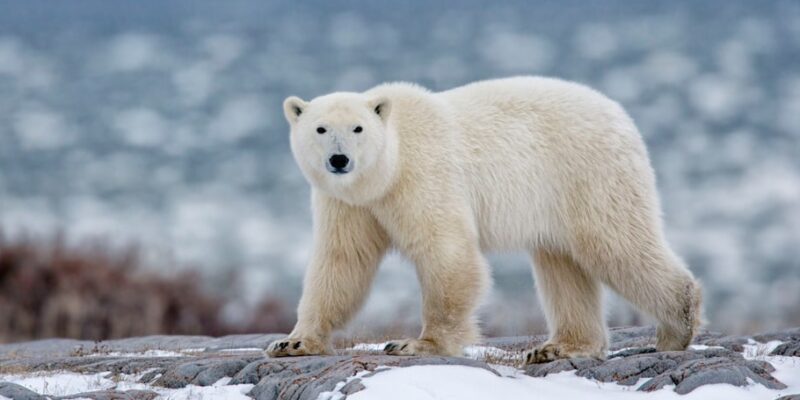
The fauna of the North Pole consists of animals capable of enduring low temperatures and harsh climatic conditions. Their main adaptations include thermal insulation (with dense fur and thick layers of fat to stay warm), hibernation (the ability to enter a prolonged sleep to minimize energy expenditure), and migration (to escape the intense cold and obtain food).
Among the main examples of Arctic animals are the polar bear (which only inhabits the North Pole), walrus, seal, bowhead whale, ox, beluga whale, arctic fox, and various birds including the Arctic tern and the snow goose.
The Northern Lights
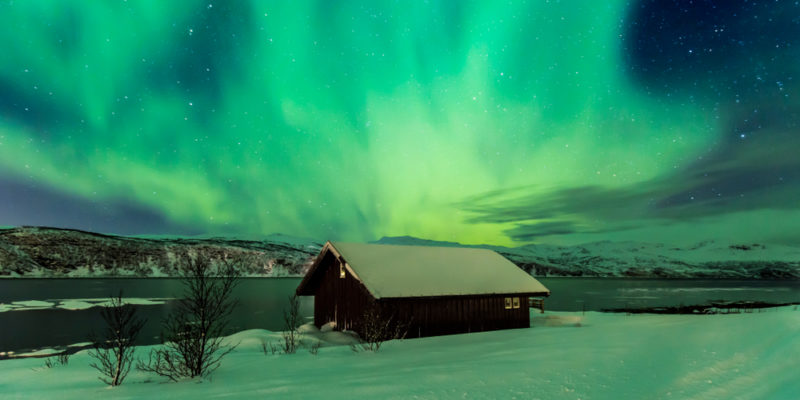
The aurora is an atmospheric phenomenon that occurs in polar regions due to the interaction between the Earth's magnetic field energy, the intensity of solar winds, and atmospheric gases. In the North Pole, it is called the aurora borealis (commonly referred to as "northern lights”), while in the South Pole it is known as the aurora australis.
The aurora borealis occurs in the outer layer of the atmosphere, where energetic particles are attracted by the Earth's magnetic field. These particles, along with atmospheric gases, produce a colorful light that varies in hues of green, blue, yellow, purple, and red. It typically occurs in late autumn, winter, and early spring in the Northern Hemisphere.
Tourists from around the world travel to regions near the North Pole to see the northern lights. They are a major attraction in northern Canada, Iceland, and northern Europe, in countries such as Norway, Finland, and Sweden.
References
- Díaz, J. V. (2020). Los polos magnéticos y geográficos de la Tierra. International Centre for Earth Sciences (ICES). https://www.uncuyo.edu.ar/
- García, C. (2022). ¿Qué es el Consejo Ártico?. El Orden Mundial (EOM). https://elordenmundial.com/
- GeoEnciclopedia. (2023). Océano Ártico. https://www.geoenciclopedia.com/
- Maillier, F. (2017). Encuentros polares: pueblos nativos del Ártico. Observatorio de Política Internacional, Facultad de Derecho y Ciencia Política, Universidad Católica de Santa Fe. https://www.ucsf.edu.ar/
- Terrasa, D. (2018). Clasificación climática de Köppen. La Guía. https://geografia.laguia2000.com/
Explore next:
Was this information useful to you?
Yes NoThank you for visiting us :)